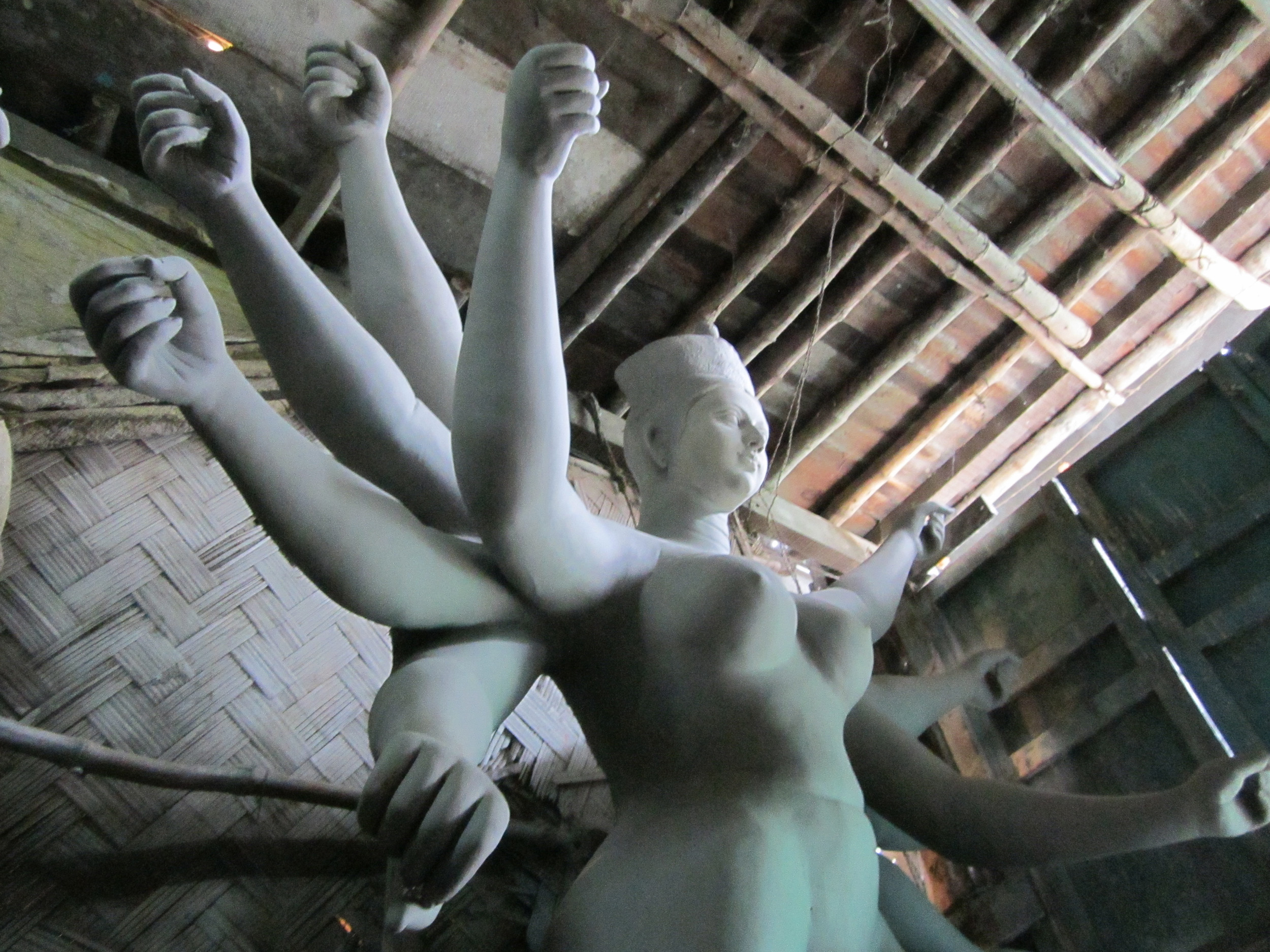Dilipda is preparing no less than five images for Jagadhatri Puja, which is celebrated throughout West Bengal and parts of Odissa about one week after Kali Puja (late October to early November) and exactly one month after Durga Puja.
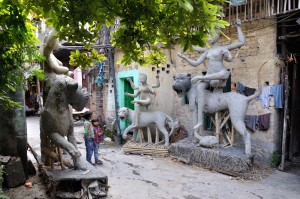
Jagadhatri is considered to be a calm incarnation of Durga. She is known as the “Holder of the World,” and it is believed that if Jagadhatri is not there, the world will fall down! The origins of Jagadhatri Puja are unclear. One account is that the puja was founded by Sarada Devi, the wife of Ramakrishna. Jagadhatri celebrations are observed today with great joy in Ramakrishna missions around the world.

Today, Dilipda is amusing himself by repeatedly telling me that he is “The Dentist To Lions,” as he finely sculpts each feline’s memorable dentition. In researching Jagadhatri’s history and observing the images of many Kumartuli workshops, I saw reference to both lions and tigers.



In addition to being accompanied by a lion/tiger, the three-eyed Jagadhatri is described as being the color of the morning sun. She holds a conch and a bow in her two left hands and a chakra and a five-headed arrow in her two right hands.

Some of the Jagadhatri images depict the lion stepping upon the elephant demon, Karindrasura, who represents human pride/power. According to Sri Ramakrishna, “Jagadhatri arises in the heart of a person, who can control the frantic elephant called mind.”




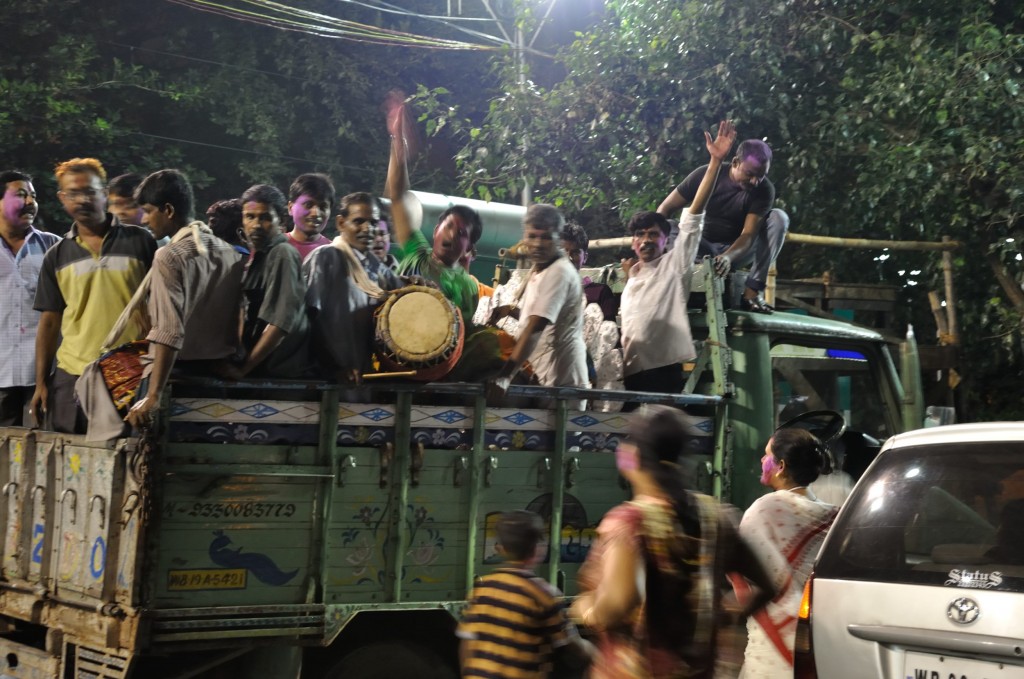 The group of people packed into the truck above all work for the same corporation, and they had brought the company’s puja pandal.
The group of people packed into the truck above all work for the same corporation, and they had brought the company’s puja pandal.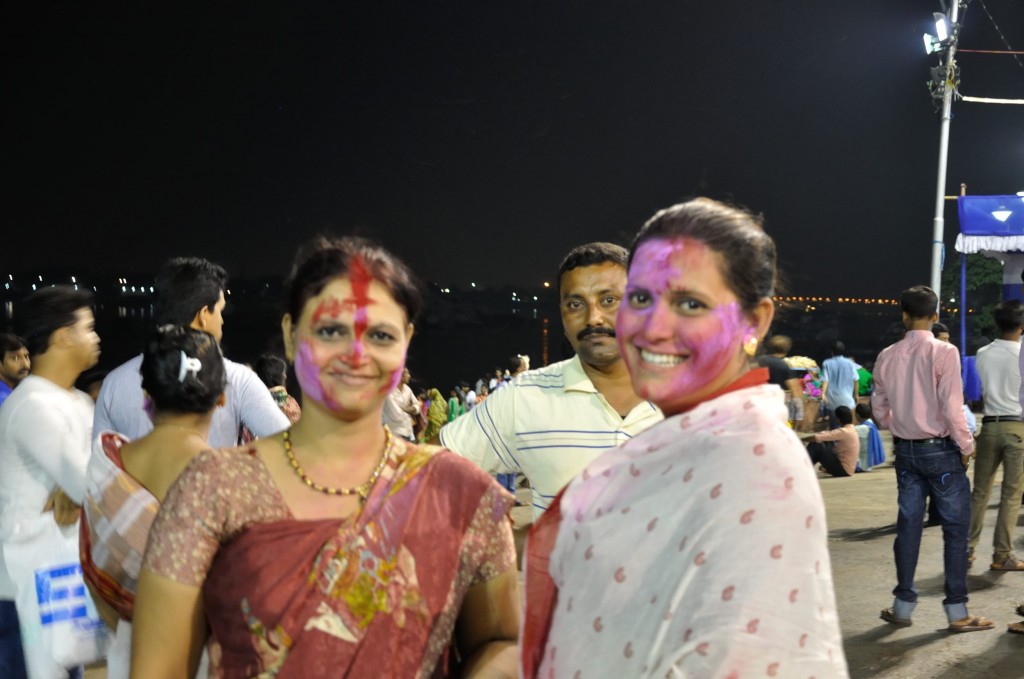



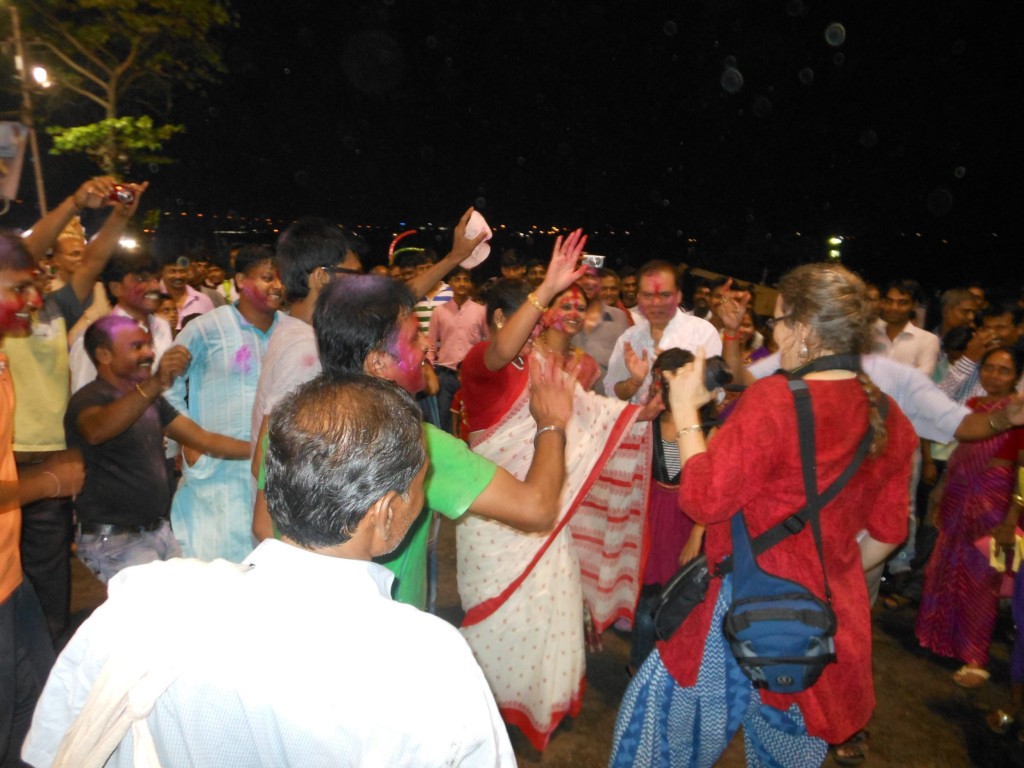











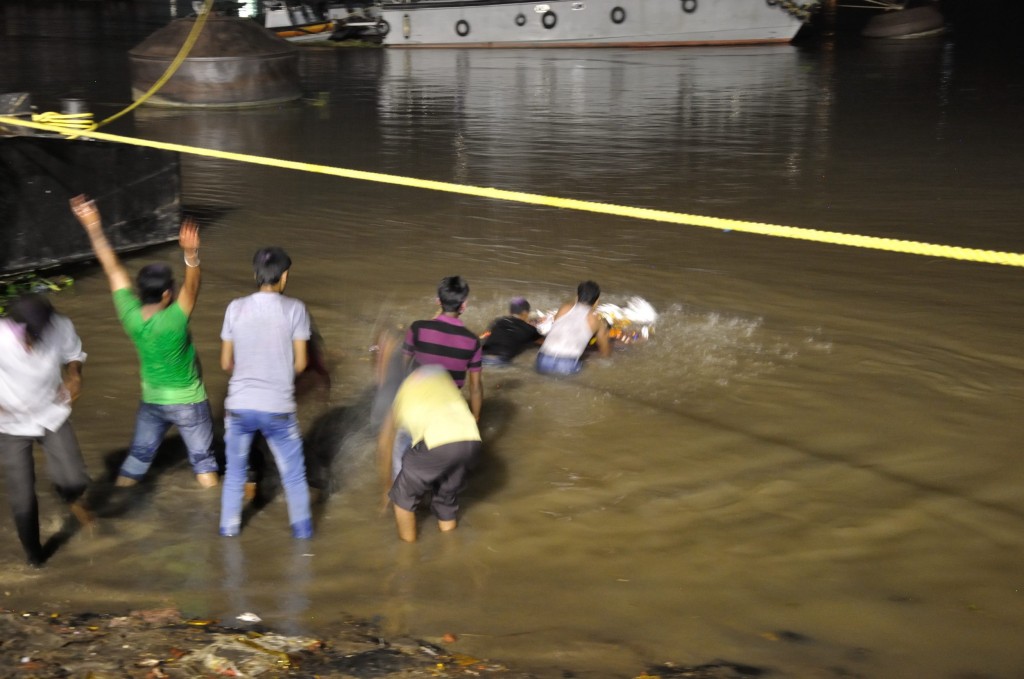

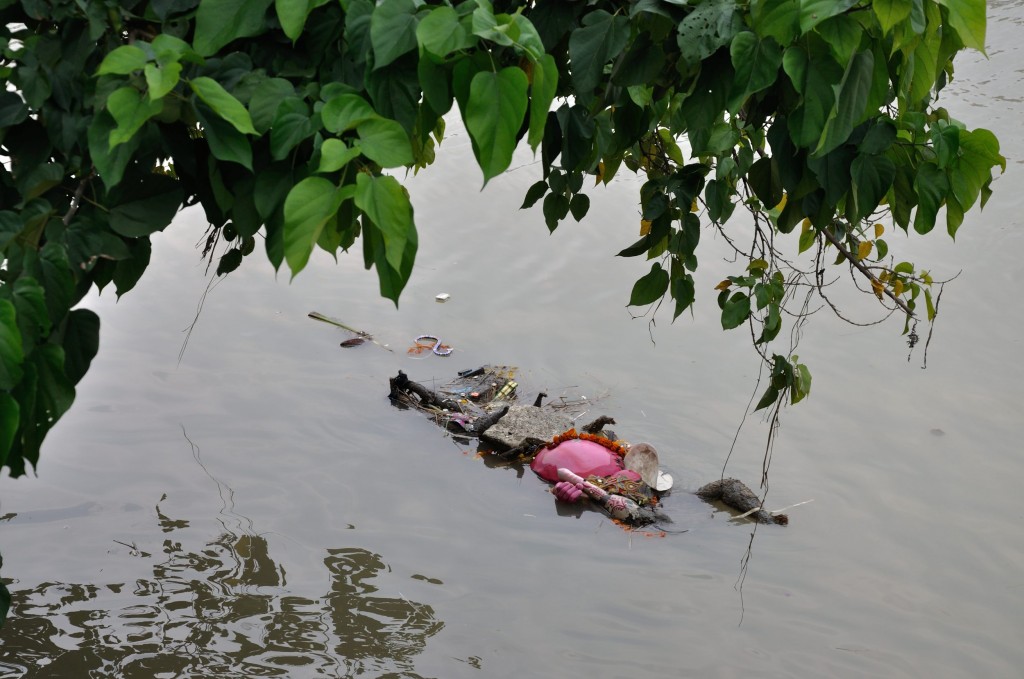











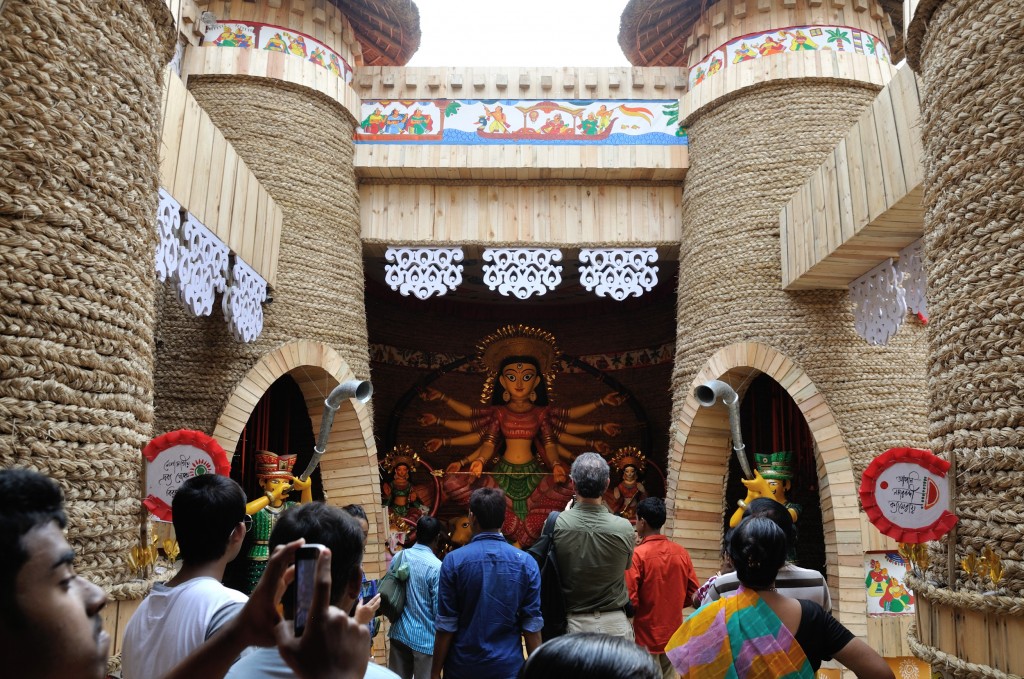


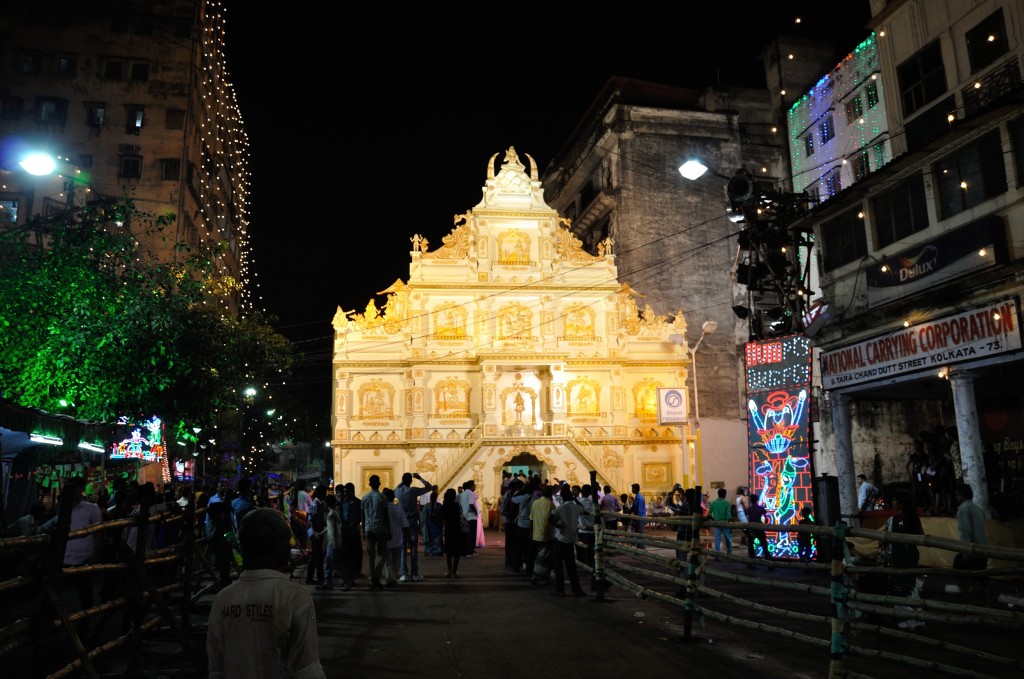


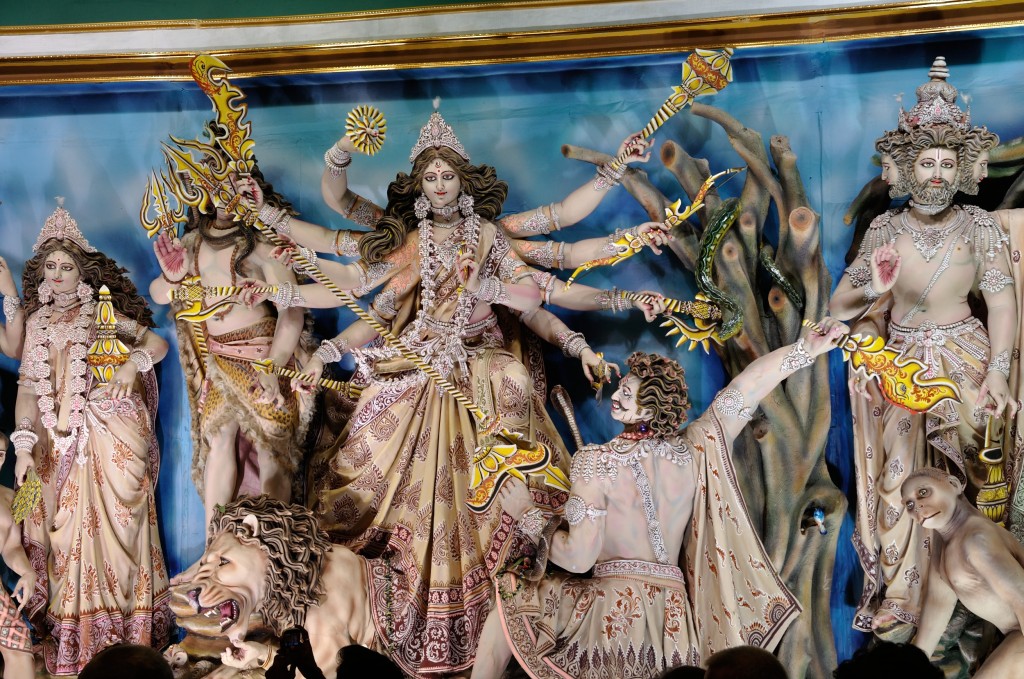
 Durga’s lion atop Mahisharsura, the Buffalo Demon
Durga’s lion atop Mahisharsura, the Buffalo Demon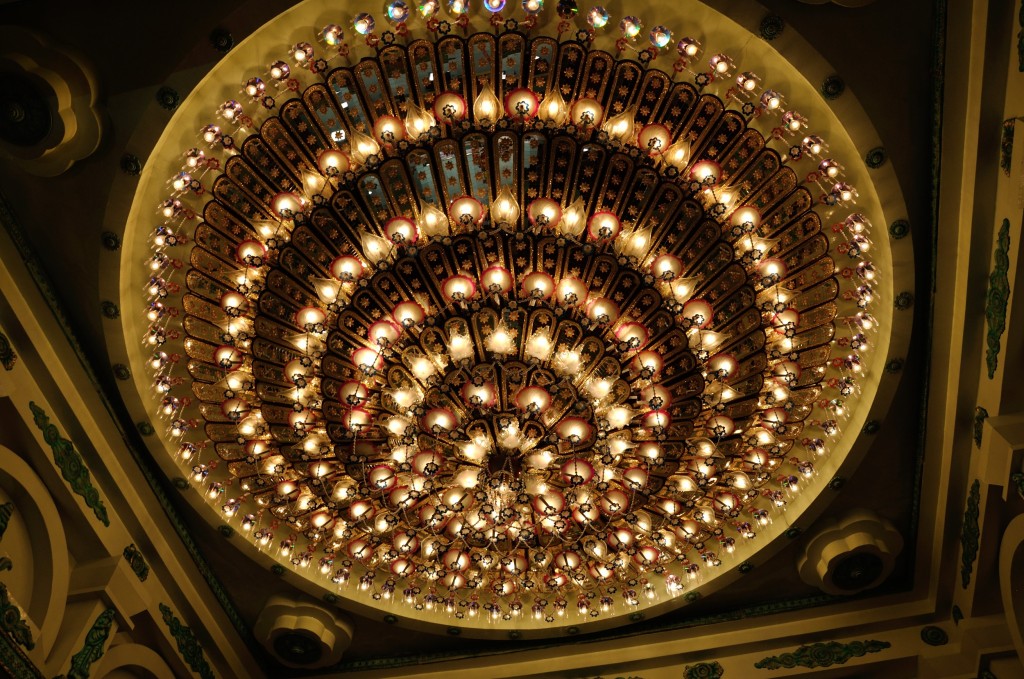




 A priest performs the traditional rites at the foot of this pandal’s Durga image.
A priest performs the traditional rites at the foot of this pandal’s Durga image.












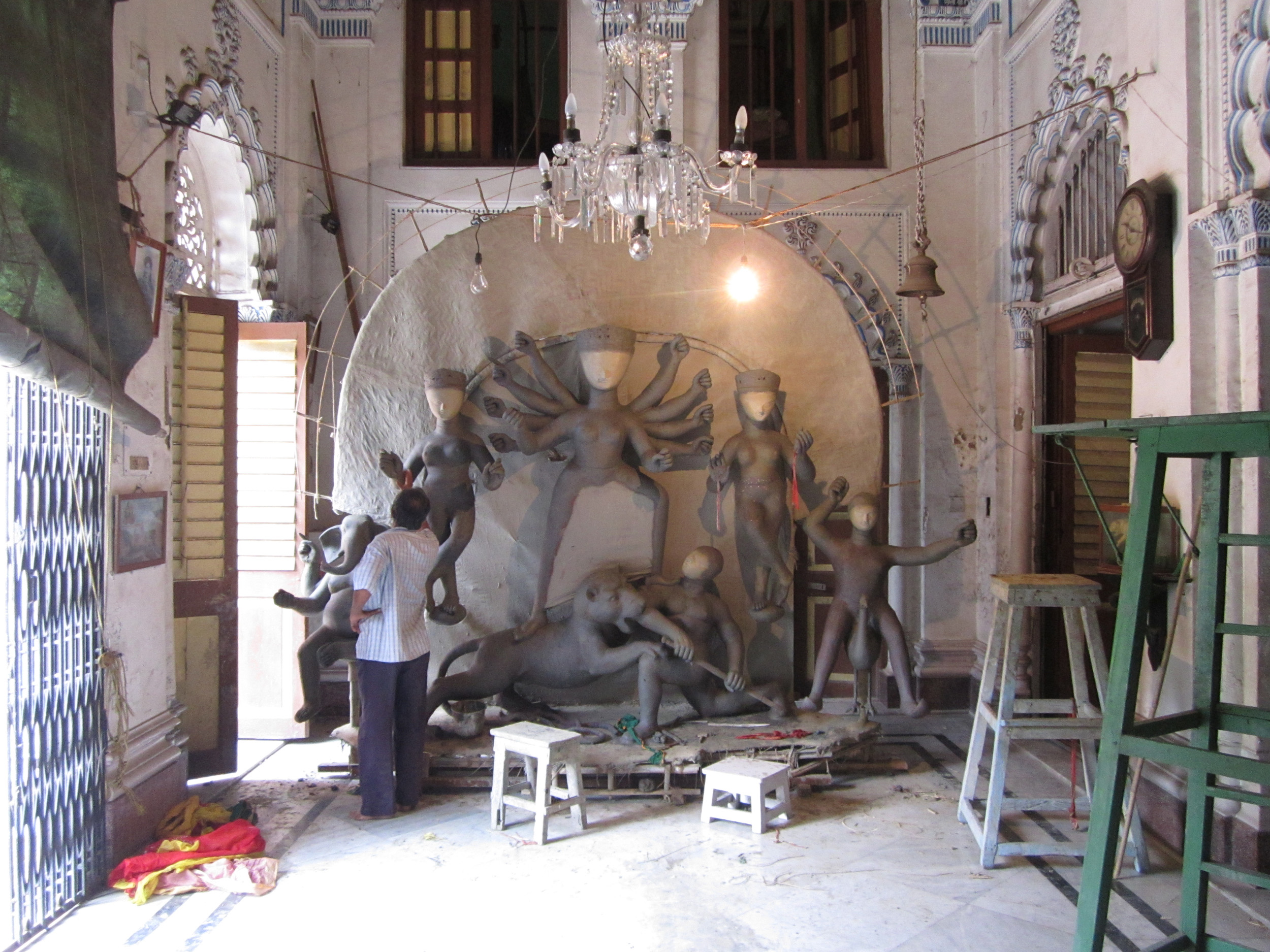




 Ganesha (above), now fully detailed and needing just one more hand!
Ganesha (above), now fully detailed and needing just one more hand!



